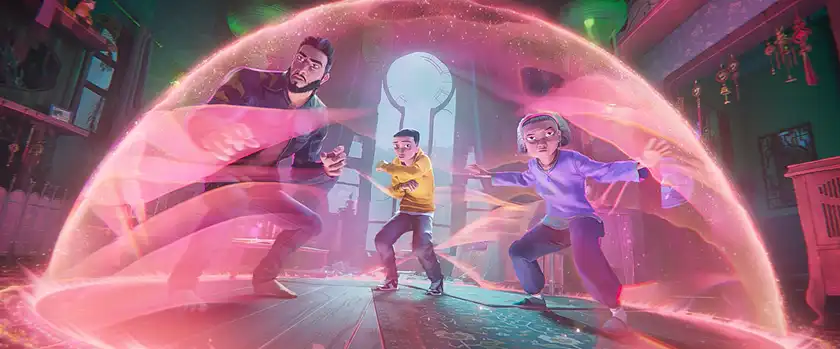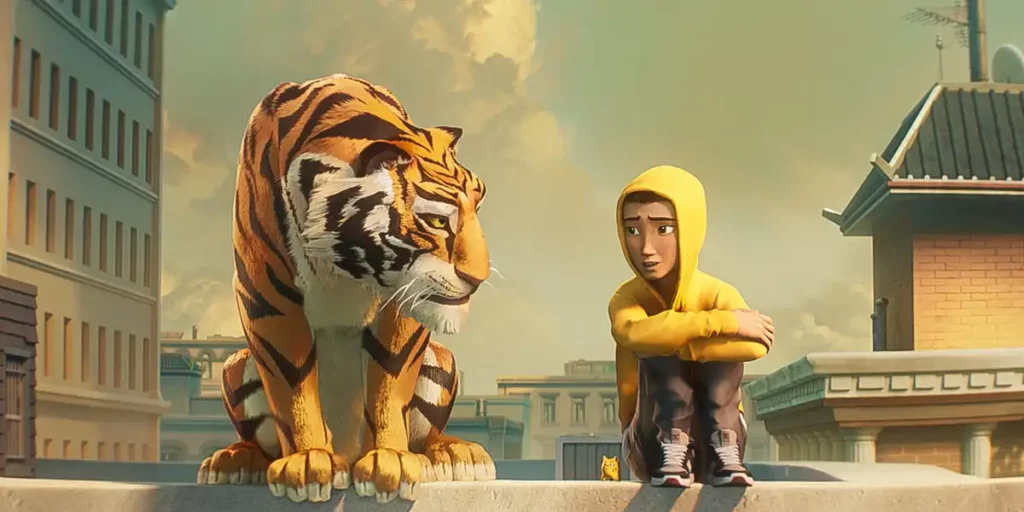The Tiger’s Apprentice does a good job introducing Chinese mythology to Western audiences, but may leave viewers wanting something with more substance and compelling characters.
In modern young adult fantasy, many stories try to recreate the myths and legends of old and update them for modern audiences. These tales have been enjoyed the world over and their reinvention by these new authors in many ways keeps with the tradition in which these stories were shared to begin with. Percy Jackson and the Olympians is a notable example of this, combining pre-teen hijinks with a unique, well-researched modern take on the Greek gods, but it is far from the only example. Even Harry Potter can be seen as a retelling of the King Arthur legend. With The Tiger’s Apprentice, the focus is on redefining Chinese mythology, making stories more obscure to Americans feel both inviting and fresh, allowing for deeper research into these stories and a lifelong love of the mythology.
The Tiger’s Apprentice, based on a novel by Lawrence Yep, deals with a theme of dual heritage, growing up Chinese-American in a culture combining aspects of both. A level of authenticity is given to the story, with every actor being of Asian descent and the martial arts choreography and aesthetics matching Chinese culture well enough. Tom Lee (Brandon Soo Hoo) is a normal Chinese-American boy living a normal life with his grandmother Cynthia (Lucy Liu), who one day places him under the mentorship of old family friend Mr. Hu (Henry Golding). Tom realizes to his surprise Mr. Hu is really a magical tiger in disguise, and soon is given the mission of defending a mysterious phoenix egg from the evil being Loo (Michelle Yeoh), who would use its powers to corrupt the hearts of humans rather than purify them.
The book The Tiger’s Apprentice was written in part to address the author’s own cultural dysphoria growing up Chinese-American. In particular, he was fascinated with how phoenixes were portrayed differently among cultures. In the West, phoenixes are a symbol of rebirth, while in China they symbolize purity and redemption. This angle is explored in the movie with both those themes present in Tom’s journey as a tiger’s apprentice. He goes to an American school and is immersed in American culture, but his visit from Mr. Hu and subsequent training symbolize an introduction to his ancestry and reconnection with the culture he lost by living in a different country. Another disconnect Yep felt was with dragons as allies rather than obstacles to be slain. The dragon Mistral (Sandra Oh) is a helpful figure in this movie and embodies the magic healing powers of Chinese dragons. The Loo creature is another deep cut from the lore, and shows how well-researched the movie is when portraying all these creatures at once.

In spite of this, the movie does little to draw itself to the deeper lore of Chinese mythology. Instead, the focus is on the animals of the Chinese Zodiac, whose commercialization and iconography may be well-known enough to Westerners to not be surprising. While all twelve animals are shown, many are not utilized enough and placed only for exposition at the beginning. The ones with the most screen time are Mr. Hu, Mistral, the Rat Sidney (Bowen Yang), and the Monkey Naomi (Sherry Cola), presumably because they were the only ones translated from characters in the book, albeit with radically different characterizations. The rest feel like extras and have no compelling backstories or explanation for how they all came together, which means attachment to them is lessened. In the book, the Monkey was a personification of the legendary Sun Wukong, whose journey symbolized Buddhist principles of spiritual balance and ascension. That would be an interesting take, but the character in the movie is mere comic relief.
The animation is a cut above most streaming exclusive films. Outside of Nickelodeon, Paramount’s track record for animation has been middling at best. This one stands out as a unique property not based on a TV show with a human protagonist. The human models feel more natural, less like caricatures, with proportions and bodies resembling action figures. This unique stylistic choice is perfect for an action film like this one. Many pastel colors and unique colors to accentuate their lighting bring out the best in these characters and make them feel realized. Each member of the Zodiac has a distinct color motif and Loo makes herself known with a sickening green. Entire dimensions and setpieces rotate during battles for an immersive experience. On this front, it may be the best Paramount animated film of the last ten years.
However, the story presented is trite and lacks many of the unique mythological details which made the book a compelling read. The story is about uniting the twelve Zodiac and incorporates several training montages into the film to establish a Karate Kid-like plot about learning martial arts to save the day. Much of the mythology and mysticism serves as a backdrop, and the parts about Tom’s ancestry are shuffled to the side in favor of slapstick and action scenes. This scenario and presentation make The Tiger’s Apprentice feel more like an episode of Power Rangers than an exploration of Chinese mythology, but it is better than nothing. The action scenes are still well-made and all the vocal performances are all exceptional, giving the right amount of life and inflection to each character.
The Tiger’s Apprentice is a harmless, fairly fun animated action film. Fans of the book may be disappointed with how it plays it safe, but as a movie on its own, it is able to work fine separate from the source. There are a few additions and certain characters feel superfluous, but in terms of capturing the essence of the story, it functions well. Themes of coming-of-age and dual identity are left intact and treated with respect. With all of this in play, The Tiger’s Apprentice may be worth one watch, but nothing mind-blowing or game-changing is to be expected from it.
The Tiger’s Apprentice will be released on Paramount+ from February 2, 2024.

